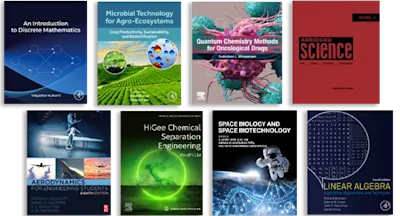
Biophysics of Tissue Self-Organization in Morphogenesis
The Role of Dynamics Along the Biointerface
- 1st Edition - May 1, 2026
- Latest edition
- Editor: Ivana Pajic-Lijakovic
- Language: English
Biophysics of Tissue Self-Organization in Morphogenesis: The Role of Dynamics Along the Biointerface delves into the interactions between tissue and the extracellular matrix… Read more
Purchase options

Biophysics of Tissue Self-Organization in Morphogenesis: The Role of Dynamics Along the Biointerface delves into the interactions between tissue and the extracellular matrix. It explores the fundamentals of cell self-rearrangement and the interrelation between biological mechanisms and physical principles responsible for tissue self-organization. The book examines modeling approaches to tissue self-organization and the application of engineering principles to solve medical problems. It also discusses tools, applications, and medical implications, particularly in embryo development, wound healing, and cancerous diseases, concluding with future developments.
Covering subcellular to supracellular levels, this book is an interdisciplinary guide for researchers in cell biology, biophysics, developmental biology, and more.
Covering subcellular to supracellular levels, this book is an interdisciplinary guide for researchers in cell biology, biophysics, developmental biology, and more.
- Describes biological mechanisms of cell self-rearrangement, from subcellular to supracellular levels
- Explores mathematical modeling approaches of tissue self-organization
- Considers engineering principles to solve biological and medical problems related to tissue self-organization
- Discusses tissue self-organization within various in vivo and in vitro organoid systems
Researchers in cell biology, cell physiology, biophysics, developmental biology, tissue biomechanics, and pathophysiology
Section 1: Tissues self-organisation in morphogenesis
1. Cell adhesion: Common mechanisms and physical principles
2. Analysis of the effect of cell movement on gene expression dynamics in development
3. Force transmission across scales: Examples and measuring methods
4. The impact of air pollution on the tissue self-organisation within co[1]cultured lung systems
Section 2: Physics of tissue self-organisation from subcellular to supracellular levels
5. How physical cues guide cell collectives, from local adhesion to global force transmission
6. Cellular death and division events at tissue interfaces: A chicken-or[1]the-egg situation
7. Active Nematics: Exploring the Interplay between structure and dynamics in cell cultures
8. The dynamics along the epithelial-cancer bio-interface within co[1]cultured cell spheroids: Physical aspects
9. Dynamical interplay at the interfaces of cancer cells, immune cells and stromal cells in the extracellular space of artificial model systems and tissues
10. Techniques development to quantify cell-scale dynamic mechanical interactions in extracellular matrices of tissues
Section 3: Modeling of the tissue self[1]organization
11. Mathematical modelling approaches to collective cell movement: Leader vs. follower cells
Section 4: Engineering of human tissues
12. Engineering of human tissues
13. Conclusion and outlook
1. Cell adhesion: Common mechanisms and physical principles
2. Analysis of the effect of cell movement on gene expression dynamics in development
3. Force transmission across scales: Examples and measuring methods
4. The impact of air pollution on the tissue self-organisation within co[1]cultured lung systems
Section 2: Physics of tissue self-organisation from subcellular to supracellular levels
5. How physical cues guide cell collectives, from local adhesion to global force transmission
6. Cellular death and division events at tissue interfaces: A chicken-or[1]the-egg situation
7. Active Nematics: Exploring the Interplay between structure and dynamics in cell cultures
8. The dynamics along the epithelial-cancer bio-interface within co[1]cultured cell spheroids: Physical aspects
9. Dynamical interplay at the interfaces of cancer cells, immune cells and stromal cells in the extracellular space of artificial model systems and tissues
10. Techniques development to quantify cell-scale dynamic mechanical interactions in extracellular matrices of tissues
Section 3: Modeling of the tissue self[1]organization
11. Mathematical modelling approaches to collective cell movement: Leader vs. follower cells
Section 4: Engineering of human tissues
12. Engineering of human tissues
13. Conclusion and outlook
- Edition: 1
- Latest edition
- Published: May 1, 2026
- Language: English
IP
Ivana Pajic-Lijakovic
Dr. Ivana Pajic-Lijakovic is a scientific advisor at the Department of Chemical Engineering, University of Belgrade, Serbia. Her research interest is related to biological physics, biorheology and biomechanics. She has previously worked as a guest editor for various special issues and has published a book with Elsevier titled: ‘’Viscoelasticity and Collective Cell Migration: An Interdisciplinary Perspective Across Levels of Organization” (2021). Her research has been published in multiple leading international peer-reviewed journals.
Affiliations and expertise
Department of Chemical Engineering, Faculty of Technology and Metallurgy, University of Belgrade, Serbia